There are many reasons we choose not to take big trips. ‘It’s not the season.’ ‘There’s too much going on.’ ‘There’s not enough time to plan.’ Especially around the holidays. And yet, three weeks before Christmas I found myself planning my first eight-day, expedition-style river trip on the Rio Grande.
My fiance and I had spent Thanksgiving with our respective families and decided to keep Christmas just to us. My wanderlust kicked into overdrive as I brainstormed for a holiday adventure. Something ‘new,’ somewhere ‘exotic.’ For weeks, I crunched the numbers on plane tickets across the globe, but nowhere felt right. Hoping for the prospect of warmer weather, we turned our sights toward a road trip instead. I’ve lived in Texas for the past two years and Big Bend National Park is one of those places you just keep hearing about—everyone that’s been there holds it in high regard and has their own special story about it.

The idea for a trip to Big Bend took root, but ultimately, we are river people. When one of our potential travel companions mentioned the Rio Grande flowed through the park, we decided, enthusiastically (and fairly last minute), to spend our Christmas vacation on a river between the U.S. and Mexico border.
The Rio Grande has 191 miles in Texas designated as Wild and Scenic. From those we chose an 83-mile stretch through the Lower Canyons, frequently acknowledged in our research as the most remote and scenic part of the river that a paddler could tackle. According to the National Park Service, approximately 1,300 people paddle the Lower Canyons each year. “It’s not for the faint of heart,” some warned, while others exclaimed it to be a “the trip of a lifetime.” I’ll admit, I was nervous. I’d gone from pricing tickets for a beach vacation in Mexico to planning a no-holds-barred river adventure.

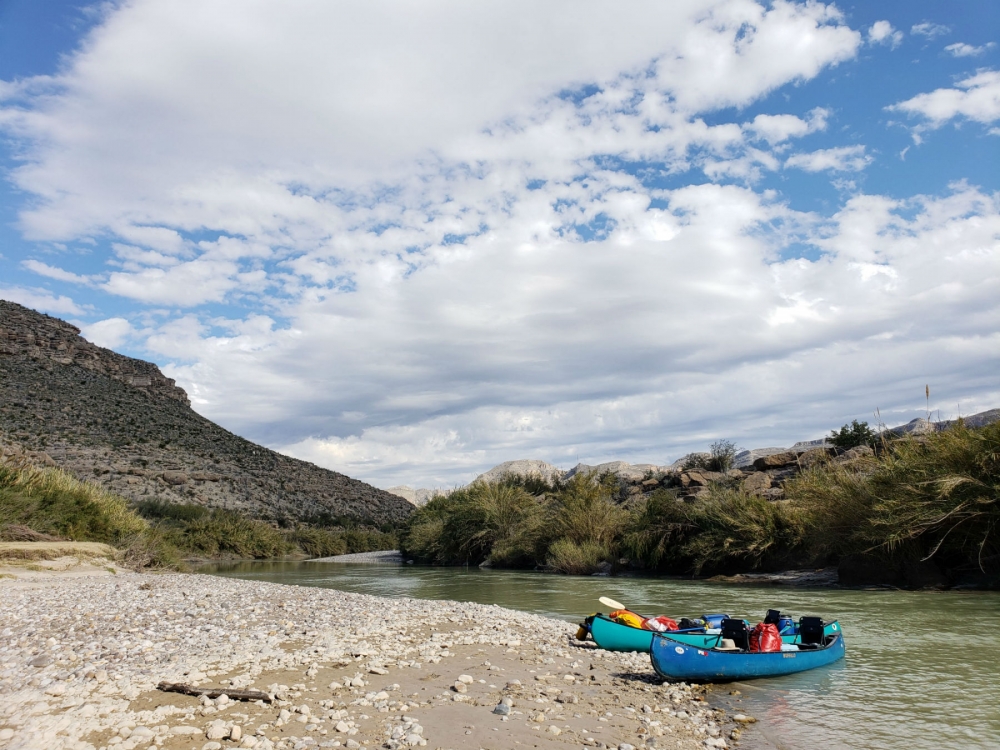
Just preparing for this expedition was unlike anything we’ve done before. My fiance is an avid packer. (Those who have an avid packer in their lives know what I’m talking about.) More of a packing procrastinator myself, I often benefit from the high standard of organization and planning he applies to our outdoor trips, but this reached a new level. Our dining room became a gear room. We strategically planned our dry storage. Researching rapids on YouTube became our apres dinner ritual. We held long conversations about cooler capacity. I may or may not have spent a fruitless day driving to a small town in east Texas searching for the holy grail of expedition canoes, a 20-foot Old Town Tripper.
I opted to paddle an inflatable kayak instead of a canoe. But I needed one with some significant storage space. None of our plastic whitewater kayaks fit the bill so, I ordered an NRS Outlaw I. I’d never paddled an inflatable kayak, but I figured, why not add a new boat to the challenge? We have a tendency to acquire boats in our family. Both we and our garage have made peace with it.
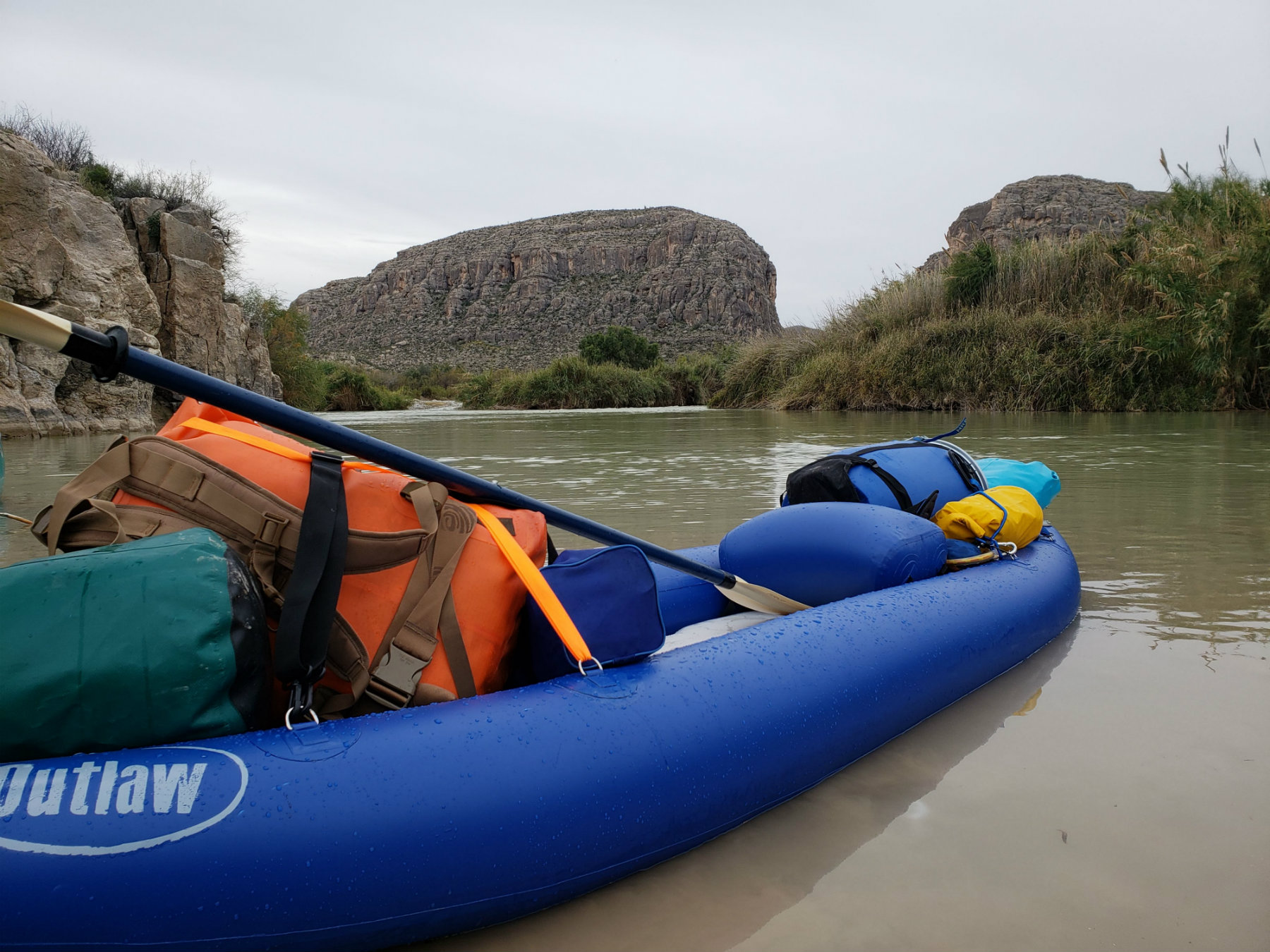
While we had called some of the local outfitters and park rangers to get a feel for the river, we chose not to go with a guide service. We purchased the River Guide to the Rio Grande: The Lower Canyons from the Big Bend Natural History Association, which proved to be an invaluable resource for the trip. But we also learned a lot of useful information from simply talking to others who had paddled this river. There’s a shared language amongst the paddling community. A language that even strangers can bond over. Simply mentioning our trip on the Rio Grande fast-tracked us to new friendships, plenty of stories and incredibly helpful tips.
Paddling the Rio Grande does require a combination of federal permits and arrangements with private landowners. We looked to the The National Park Service for info on the put-in and take out points, as well as the required permissions.
After three frenzied weeks of preparation, 13 hours hauling canoes through the winds of West Texas, one detour to find dry ice, and a night spent in an AirBnb in a town called Marathon, we put on the river at Heath Canyon. Across the river from the put-in lay the abandoned Mexican village of La Linda.

It was a wild feeling to embark on a trip seeped in so much newness. Our four-member group represented a wide range of experience in terms of paddling, first aid, whitewater rescue, and backcountry knowledge. Regardless of expertise, it’s a simultaneously daunting and thrilling thing to sit in your boat, put your paddle in the water, and know 83 miles of river lie ahead of you.
From the beginning, the beauty of the Lower Canyons did not disappoint.
A whole new world of red rocks, sand, and desert flora instantly surrounded us. I hadn’t expected so many turtles to join us and I may be alone here, but as long as they’re of the non-snapping variety I always find them to be a friendly presence on the river. But as the trip wore on, we delighted in the more exotic wildlife sightings as well. Wild burros serenaded us at our campsite. Peregrine Falcons soared high between cliffs. Bighorn sheep and Aoudad sheep blended into the landscape so well, we could only be sure of their existence when they moved. Some of the knobbier bluffs reminded us of toes from some mythical stone giants. The Rio Grande boasts a landscape so prehistoric, you could easily imagine encountering a dinosaur around the next bend.



Paddling a river in a totally different part of the country perpetually challenged our pre-existing expectations. The first morning we woke up covered in dew, which wasn’t a shocking revelation (camping on an island with a big river swirling around both sides will do that to you), but it was a bit jarring to realize how wet things could get in such an arid landscape. The watercolor surprised us too. Having seen the Rio Grande in other states, we’d anticipated muddy water, but the beautiful blues and greens of the river through the Lower Canyons reminded us more of our home rivers in Arkansas.
As we descended deeper into the canyons, paddling became a real-life optical illusion. Things appeared much closer than they actually were. Due to a lengthy horizon line, it took a deceptive amount of time to arrive at bends that seemed to be just up ahead. And as the canyons sloped toward the river, we fought the temptation to think that the gradient of the river turned downward because, in reality, it continued on a level grade. The sky oscillated between seeming huge and very, very small depending on the scale of the canyons around us.

A rhythm formed like any multiday river trip: Paddle. Eat. Sleep. Repeat. I’m sure those who make long river trips a habit are already familiar with this, but I hadn’t given much thought to the level of energy it would take to pack up all our gear and rig our boats each day—not to mention setting up a new camp each night and cooking meals. Sunlight hours were limited once the canyon walls engulfed us, especially with the winter sun’s early demise. Admittedly, hauling around more gear and belongings than some of my backpacking-style companions, I joked a few times (okay maybe more than a few) that I felt like I was losing the packing race to outfit our boats for the river each day. (And I was losing, but I improved.)
The Rio Grande held more surprises as we paddled on. In this part of the country, we anticipated scorpions and snakes, but the real woes came in the form of river cane and cow excrement. Our guidebook had mentioned the invasive plant, river cane (Arundo donax), posed an increasing problem in recent years. We likened it to kudzu in its capacity to grow anywhere. Indeed, it grew in massive thickets that overtook the majority of the riverbanks and extended into the water, producing some must-avoid strainers at low water levels.
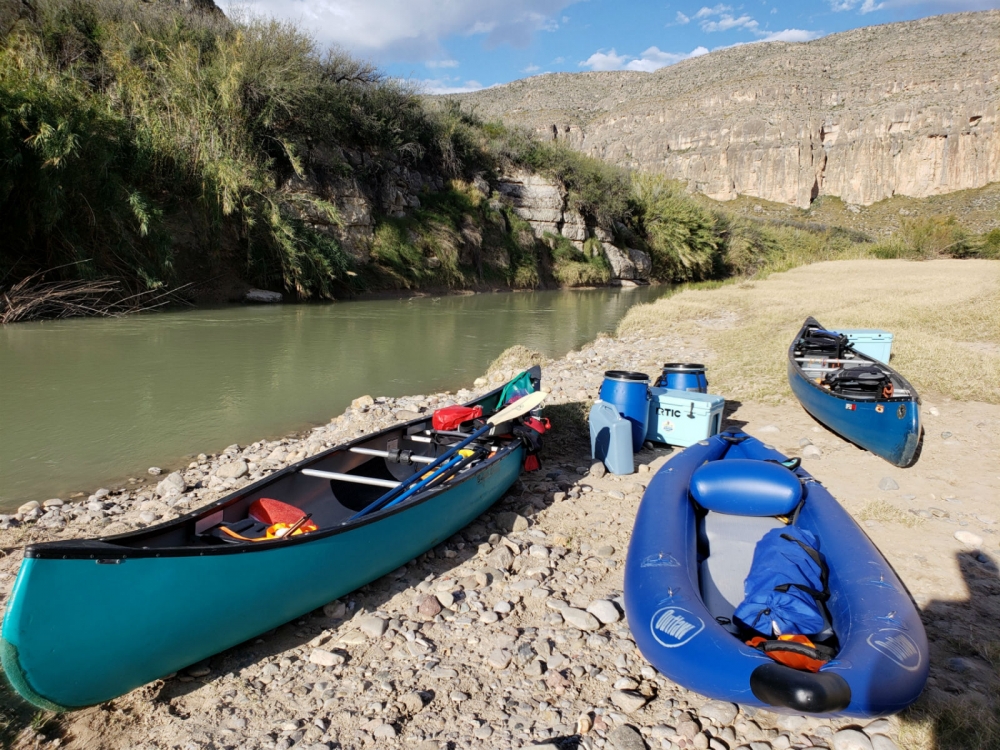


Many of the banks had been worn down by cattle and littered with cow patties from bovine that had cast off the shackles of their domestic existence from the private ranches and traded it for a lean life on the banks of the river. And after a few encounters with the legendary Rio Grande mud, we learned to tell the difference between a bank where we could unload our gear without issue and a bank where we would end up in mid-thigh, Indiana Jones-style mud.
Despite the cane, the cows and the mud, we found great spots to camp. About halfway through our journey, we happened upon a site so perfect, we stayed two nights. More than once we decorated our camp canoes with LED Christmas lights to celebrate the holiday. And as we relaxed on the sandy banks along the river, my fiance joked that I’d gotten the Mexican beach vacation I’d wanted after all.



Every day we referenced our guidebook to determine our mileage progress. Discussing potential mileage counts, we used landmarks noted in the guide as wayfinding tools, but some days it was difficult to tell how far we had or hadn’t gone. One day we thought we’d made about 11 miles of progress, but in retrospect, we realized we’d paddled closer to 17. I felt particularly exhausted at the end of that day. I had worried about my own ability to handle any big rapids we might encounter as the day wore on. But it was the other boat in our party who had a rather unlikely tip. Our campsite that night was one of necessity and an occasion to open the whiskey.
There are some spots on the river that required deft maneuvering, some portages, and long pools. Wave trains are my favorite (of course), and in my kayak, I was well suited to paddle a line through the fun parts of those. My canoed companions put their bilge pumps to good use while I cracked a beer and relished the convenience of my self-bailer.
Portaging was an art we learned by doing. Our runs back home don’t often require it (and certainly not with eight days of supplies!). We had one character building day with both a portage-and-a-half and an instance where we lined our boats through a rapid. That night around the fire pan, we felt we had earned the steaks we’d been saving.
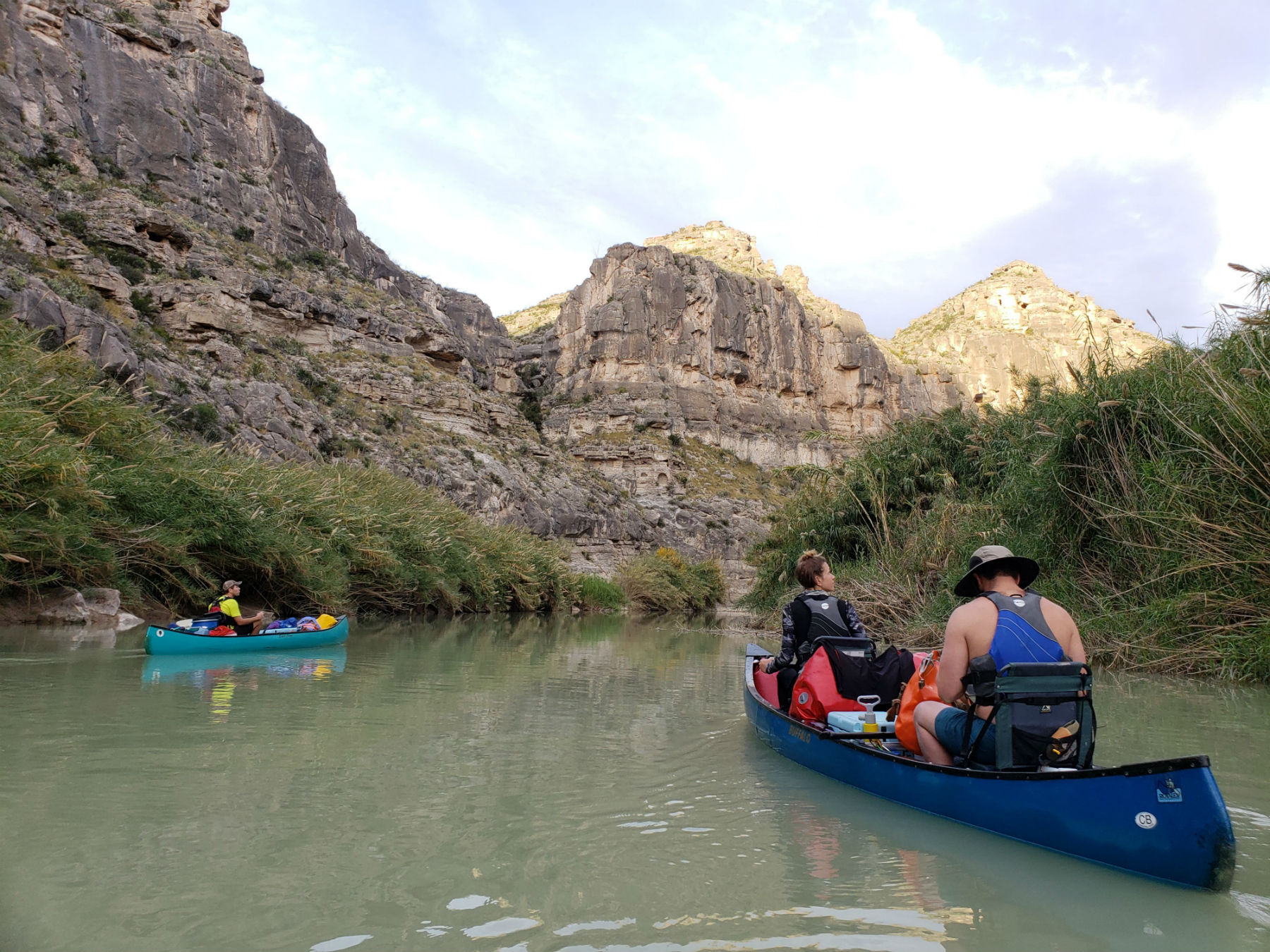
There’s a poetry to the Lower Canyons, moments of quiet after you’ve been paddling for a while. The need to make conversation falls away in the face of the sheer beauty all around us. Photos don’t capture the enormity of the canyon walls or the sense of ancient history they convey. We never saw or heard another person the entire trip, just the braying of wild burros in the distance, the disproportionately loud echoes caused when a bighorn sheep knocks a rock off of a cliff, the chorus of Rio Grande leopard frogs, and the lullaby of crashing rapids in the distance.
A waxing moon proved to be our constant companion, with light from the full moon ultimately casting shadows on our campsites as if it were daytime. After the moon sinks a bit, in the early morning hours, the stars are indeed big and bright in the clear skies of Texas (and Mexico). The last night we spent on the river we scouted a rapid by moonlight and didn’t bother scouting again the next morning.

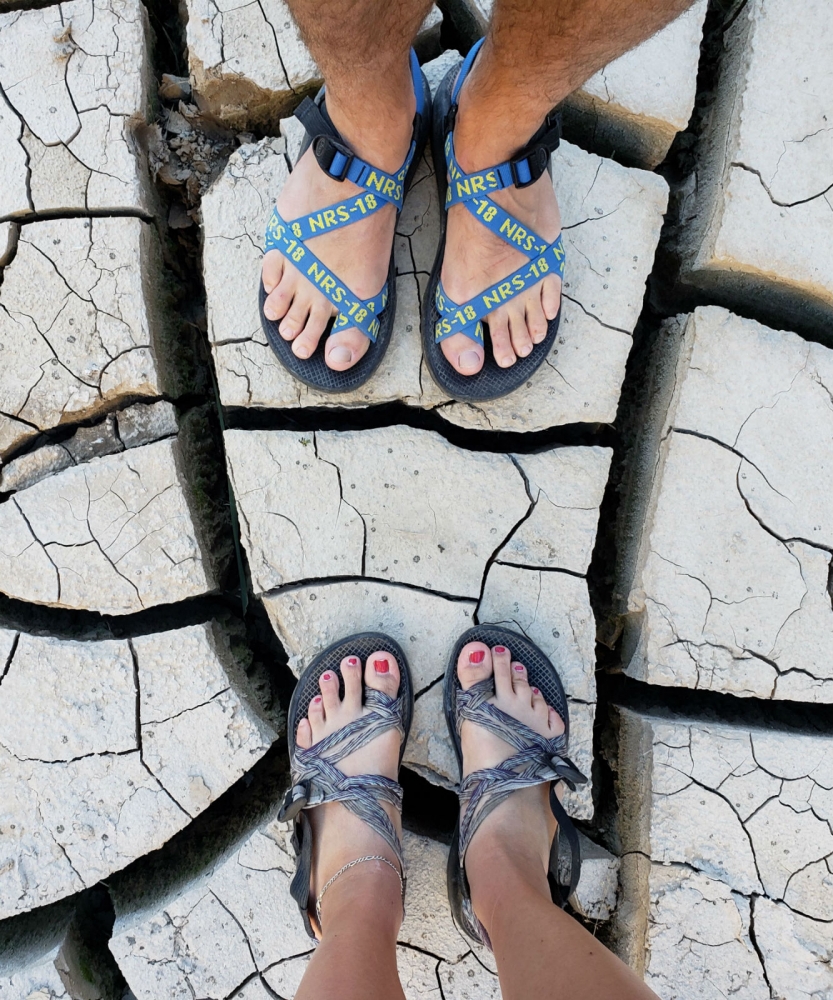
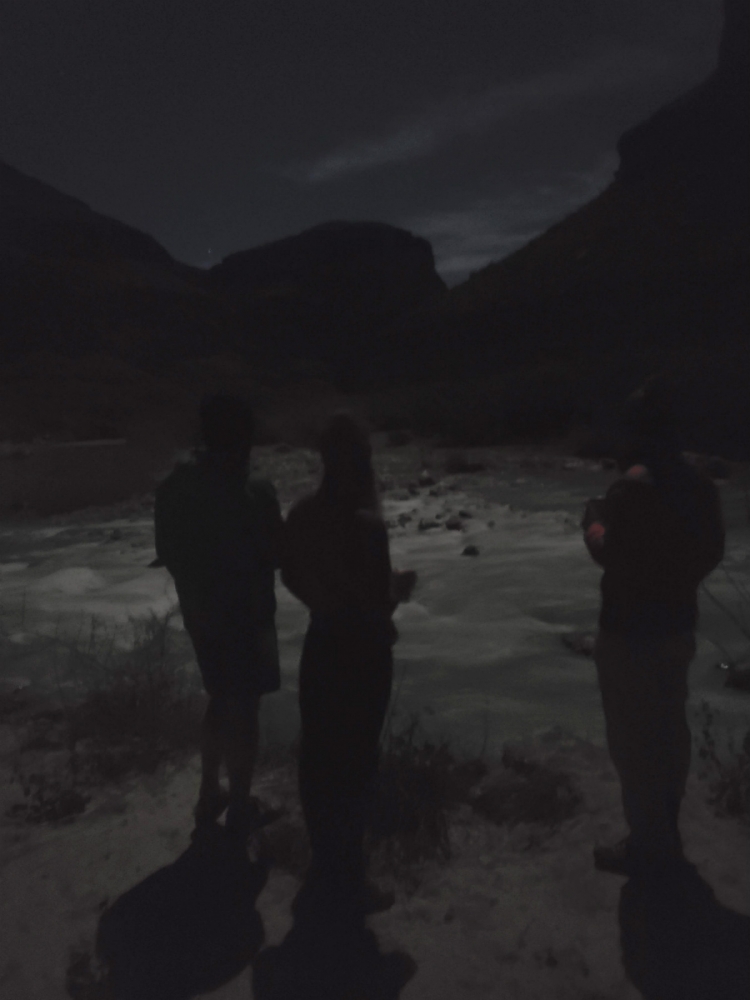
I’ve thought a lot about why one embarks on a trip like this. Everything clicked into place for us a few weeks before Christmas and it seemed to just make sense. For me, it wasn’t a particularly relaxing trip, but a different type of recharge. You spend some time wet and cold. You make jokes about the waste removal system because how can you not? Being nestled in the heart of the canyons is an almost religious experience, absolutely unique.
I guess the long and short of it is, you do a trip like this because you can—even if it’s a challenge, and perhaps specifically because it is. Because you want to leave the ‘real’ world behind for a little while—it’s comforting to know that you can be without it, even over Christmas. I think we seek adventures like the Lower Canyons to make memories, to do something that’s worth remembering. How often in this world of google maps and instagram geotags do we get to see something totally new, using our own eyes (and a laminated river map) as the primary source?

The memories we make, the conversations we have around a campfire, the connections we create when we make it through unexpected situations together, they’re different than the bonds we forge in our daily lives. We give ourselves the gift of a shared experience. That, along with the intense beauty of the Rio Grande, was a damn fine gift to receive this Christmas.
Editor’s Note: Guest contributor, Rachel Spencer spends her days working for the federal government to promote local food systems through farm-to-school programming. When she’s not helping schools figure out how to bring more local foods into their lunch programs, she runs Float Eureka, an Arkansas outfitter she co-founded with her fiancé and adventure partner Max in 2017.